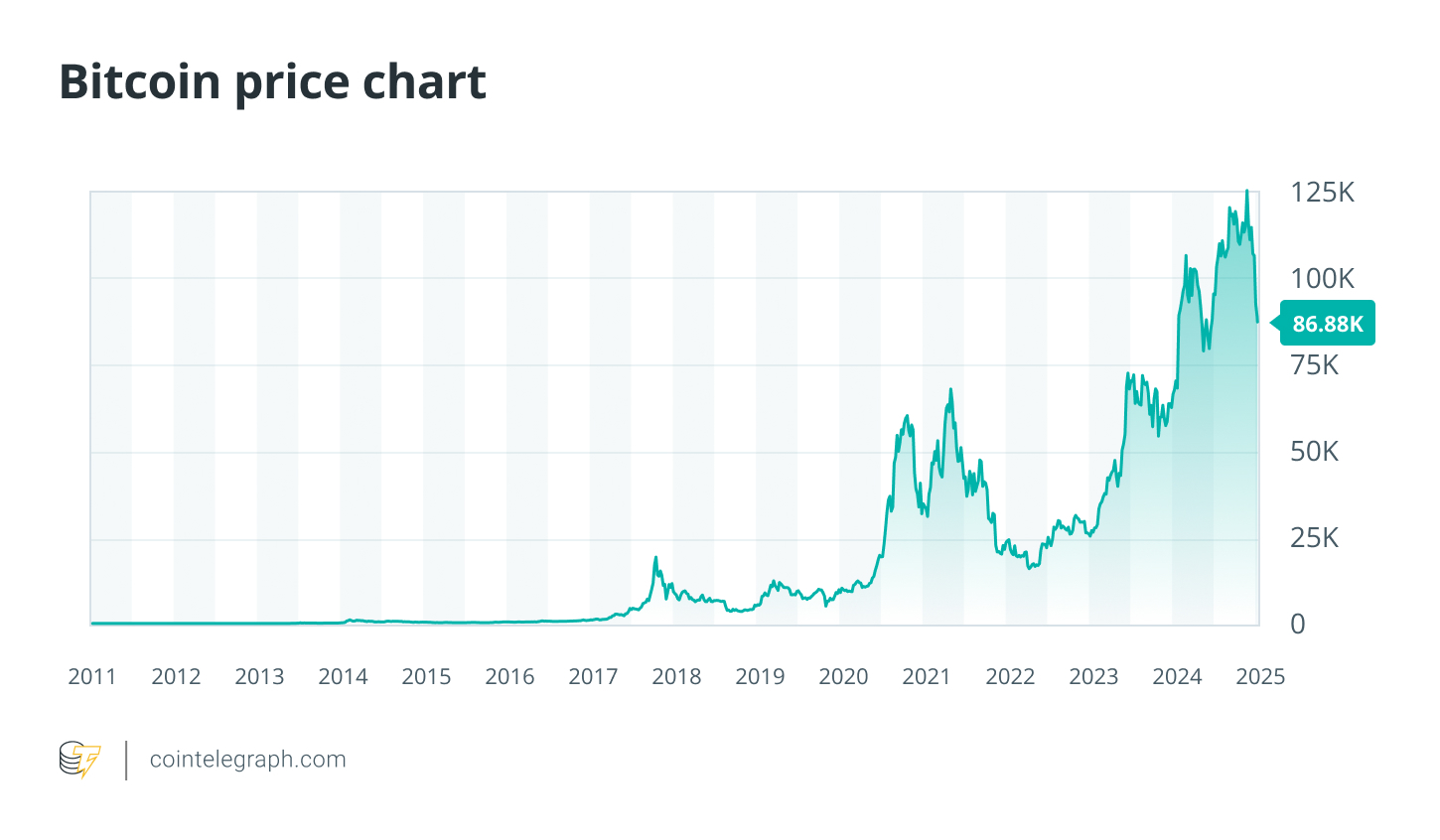
The Impact of Declining Inflation on Bitcoin Prices and Perceptions
This article explores how cooling inflation influences Bitcoin's role as an asset, its price behavior, and investor sentiment.
The Impact of Declining Inflation on Bitcoin Prices and Perceptions
Inflation, Economic Cycles, and Bitcoin’s Roles
Inflation is central to current economic trends. High inflation prompts central banks to increase interest rates and trigger a movement towards safer assets. Conversely, as inflation decreases, liquidity tends to improve alongside a renewed risk appetite, shifting market focus towards future growth.
In this context, Bitcoin (BTC) serves two primary purposes:
- A store of value due to its fixed supply and consistent issuance.
- A speculative tech asset influenced heavily by market sentiment and liquidity conditions.
Periods of decreased inflation often merge or compete these dual objectives, dependent on the cycle’s phase.
Historical Instances: Bitcoin’s Performance During Past Cooling Inflation Phases
Examining past market cycles provides insights on how decreasing inflation plays a role in Bitcoin’s price and volatility.
2013-2015: The Digital Gold Narrative
After Bitcoin’s significant price rise in 2013, global inflation went down, leading to a dip in risk appetite. The cryptocurrency embarked on a long struggle for price consolidation, resulting in investors identifying it as a potential long-term store of wealth akin to gold. Although price movements were sluggish, the foundational narrative solidified.
 Bitcoin price chart
Bitcoin price chart
2018-2019: Institutional Interest Emerges
Post the 2017 peak, cooling inflation saw central banks tighten their policies. Bitcoin remained range-bound during 2018-2019, yet notable events transpired:
- U.S. financial institutions initiated research on Bitcoin as a non-correlated hedge.
- Launch of custody services and futures markets.
- The store-of-value narrative gained traction. While a cooling inflation did not immediately prompt a rally, it laid the groundwork for future institutional adoption.
2022-2024: Bitcoin Transitions to a Macro Asset
After inflation soared to a 41-year high in 2022 and cooled in subsequent years, Bitcoin transitioned into its next phase:
- It ceased acting merely as an inflation hedge.
- The asset became increasingly responsive to liquidity and interest rate expectations.
- The landscapes of exchange-traded funds (ETFs), institutional money flows, and tokenization narratives flourished.
As inflation decreased and risk tolerance picked up, Bitcoin transitioned from a crisis hedge to a growth-centric asset.
Did you know? The first Bitcoin block, mined by Satoshi Nakamoto on January 3, 2009, contained a hidden message from a The Times headline addressing bank bailouts, representing both a technological breakthrough and a critique of the traditional financial system.
The Influence of Falling Inflation on Bitcoin’s Trajectory
The relationship between declining inflation rates and Bitcoin is intricate, with macroeconomic shifts impacting its perceived value and role as a digital asset.
- From inflation hedge to beneficiary of easier money: the urgent need for protective hedges diminishes with falling inflation. Investors prefer assets that thrive in relaxed monetary environments. Bitcoin has frequently outperformed following central bank pauses or cuts in rates, particularly when real yields hit their peak and liquidity is forecasted to rise.
- Renewed focus on its store-of-value features: Falling inflation signifies economic stability and draws attention to Bitcoin’s fixed supply schedule.
- Return of speculation and retail involvement: Lower inflation shifts sentiment from fear to opportunity, boosting leverage, altcoin activity, and retail trading volume.
- Increased institutional commitment: With reduced macroeconomic uncertainty, institutions feel more confident including Bitcoin in their portfolios, leading to increased ETF inflows and balance-sheet allocations.
Typical Price Behaviors During Cooling Inflation
Bitcoin’s price response during cooling inflation phases reveals a multifaceted history characterized by rapid price changes driven by diverse macro- and microeconomic influences.
Four key patterns have emerged across various cycles:
- Heightened volatility at the onset of the cooling phase as markets speculate about potential policy adjustments.
- Robust and sustained rallies when rate cuts or pauses appear likely.
- Initial strong correlation with tech stocks that tends to fade as market conditions stabilize.
- Price reversals and new upward trends typically begin before inflation reaches its lowest points.
Cooling inflation generally fosters conducive conditions for Bitcoin by:
- Lowering discount rates and heightening the present value of scarce long-duration assets;
- Enhancing overall liquidity and rendering risk assets more attractive;
- Diminishing economic uncertainty and bolstering long-term confidence;
- In certain cycles, declining inflation coincided with steadier energy expenses, benefitting miners;
- Encouraging institutional investment by clearing major macroeconomic barriers.
These elements have historically coincided with stronger market performance.
Cooling Inflation: Understanding the Risks
While cooling inflation is not a foolproof indicator of sustained economic strength, prior cycles demonstrate that corrections remain a possibility.
Past cycles illustrate:
- Over-optimism regarding imminent rate reductions.
- Temporary inflation drops followed by renewed increases.
- Sudden risk-off events.
- Unexpected regulatory actions that overshadow positive macroeconomic trends.
It’s crucial to acknowledge that different Bitcoin cycles may traverse diverse paths spurred by various catalysts. For example, the current cooling inflation cycle diverges from previous ones due to:
- The existence of spot Bitcoin ETFs increasing institutional interest.
- Advanced stages of tokenization and stablecoins.
- The compelling attraction of Bitcoin’s scarcity narrative.
- A better understanding of Bitcoin’s response to liquidity dynamics.
Ultimately, declining inflation may enhance both Bitcoin’s identities as a store of value and as a macro-responsive asset while fostering a more resilient market.



